PGR Weed 101: What You Need To Know
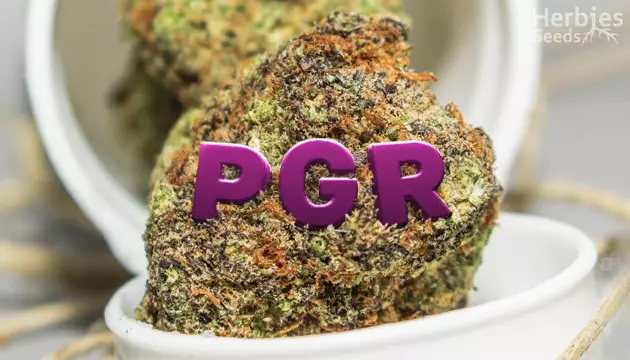
There’s nothing wrong with being picky about what you smoke, only choosing the juiciest-looking buds you can find. However, what if we told you that looks can be deceiving? Gone are the days where all cannabis you see is straight from the earth.
Unfortunately, we live in a world where profit often comes before value. Suppliers may do whatever they can to make their product stand out from the rest, even if that means a shoddier product with potential health threats. The same goes for parts of the weed industry.
Some suppliers boost their crops with unnatural plant growth regulators, or PGRs, giving their crops a thicker, heavier yield. So, what are PGRs exactly, and is weed grown with PGRs really that bad?
What Are PGRs?
To put it simply, PGRs are normally naturally-occurring plant hormones that instruct the plant what to do after a stressor or input from the environment is applied. These hormones tell the plant when to branch out, flower, set down roots, turn male, etc. If you’ve ever trained a cannabis plant, you’ve worked with that plant's natural PGR system.
However, most weed grown with PGRs is far from natural and uses human-made plant growth hormones to manipulate the cannabis plant into growing shorter, stockier, and bear thicker buds. That may sound like a dream come true, but if we’ve learned anything these past few years, it's not to mess with mother nature.
The Dangers of PGR
Human replicas of naturally occurring substances seldomly go according to plan. Growing weed with human-made PGRs has shown many signs of harming not only humans but animals and the environment as well. In some countries, they are even considered pesticides and are banned for use on consumable crops. PGRs may be of concern:
For Humans
Although it’s not clear what the effects are of smoking PGR cannabis, some studies suggest that exposure to PGRs may have both short and long-term effects on human health. Exposure may include smoking PGR cannabis, eating fruits grown using PGRs, or living near agricultural land using PGRs.
In mammalian studies conducted to determine their safety, some PGRs were proven to be highly toxic, causing liver damage, poor respiratory function, and reduced activity. Long-term exposure resulted in infertility and cancerous growths in the body.
It is fair to mention that these results were recorded after more acute exposure to the chemicals. The amount found in PGR weed plants may be too small to do noticeable harm. However, your health is not worth the gamble!
For the Environment:
Along with their proven toxic nature to mammals, the use of PGRs causes significant damage to the environment. When PGRs are used to grow crops, the residual chemicals enter delicate ecosystems. Because PGRs are classified as pesticides, they contribute to the pollution of these systems.
When leaked into the water system in particular, via rain, irrigation, or soil run-off, their pollution causes damage to the digestive organs of fish and destroys their unborn embryos. Equally, the build-up of PGRs in soil proves toxic to microorganisms and changes the microorganism diversity needed for healthy soil.
For Weed:
At this point, it’s clear that PGRs are not healthy for the environment or mammal consumption, proving that they can’t be very healthy for plants either.
PGR in weed is comparable to steroids in humans. They plump up and build the appearance of a healthy plant with juicy buds, but internally, the plant is not functioning properly. Think of it like a bodybuilder slowly dying of kidney failure while appearing perfectly fit and healthy on the outside. This is how the appearance of PGR cannabis can be so deceiving, even though it will also be more brown in color with a lesser amount of trichomes, which doesn’t look too good.
Although not all PGRs are harmful, those of concern are unfortunately still commonly used. These PGRs are the biosynthesis inhibitors – in other words, the ones interfering with the plant's natural growth hormones.
Damniozide (Alar)
One of the most scandalous PGRs still used today on food crops in the UK, despite being banned in other countries for being a known carcinogen, is Damniozide, otherwise known as Alar.
The reason this PGR is so scandalous is due to a famous $100 million lawsuit following the use of Damniozide on apple crops in the USA after it was proven to be carcinogenic in nature. It is now banned on food crops but still used on cannabis in many countries to maximize bud yields.
Damniozide works by inhibiting the plant's ability to grow leaves and stems, instead putting more energy into growing thicker buds. However, while the buds do grow bigger and juicier in appearance, Damniozide also inhibits terpene production and cannabinoid production, resulting in fewer trichomes and weaker weed per gram.
Paclobutrazol
Possibly the most harmful PGR to aquatic ecosystems is Paclobutrazol, another common PGR used for cannabis production. Building up in aquatic environments and affecting the internal organs and embryos of fish populations, Paclobutrazol has been proven highly toxic.
This plant growth hormone has also been proven to negatively impact the livers and development of rodents, and is subsequently suspected to cause similar effects in humans. According to the World Health Organization, Paclobutrazol is classified as “Moderately Hazardous,” meaning it may have more serious effects after longer exposure.
In weed grown with PGR, Paclobutrazol is used to grow flower that’s denser, with more elongated cells. This affects the plant's ability to produce certain vital terpenes and reduces its ability to produce THC.
On top of this, when smoked, this dangerous PGR breaks down into chemicals called Nitrosamines. These are the most carcinogenic components in cigarettes. Along with Paclobutrazol’s effect on fertility and liver function, it’s safe to say you should avoid it at all costs!
Chlormequat Chloride
One of the most toxic PGRs used on crops worldwide, approved as a pesticide in Europe, is Chlormequat Chloride.
Classified as an “Extremely Hazardous Substance,” this PGR has been proven by numerous studies to cause significant harm in mammals. This includes a study where the reproductive abilities of pigs were drastically reduced upon exposure. It is recognized as so toxic that it’s no longer approved for crops intended for either human or animal consumption.
Even with that knowledge, it is still used for weed grown with PGRs. In PGR cannabis, Chlormequat Chloride is used to inhibit the plant's vegetative growth, diverting the energy to the development of flowers in order to grow bigger yields. PGR weed plants grown with Chlormequat Chloride are much shorter and more uniform than natural weed plants. Although this is an asset for large cannabis producers, the risks seem to outweigh the benefits.
Uniconazole
Similar to Paclobutrazol, Uniconazole inhibits the plant's vegetation period, growing denser buds on a shorter plant frame. The two PGRs have very similar chemical structures and act on the plant's hormones in a similar way. However, Uniconazole is more effective at increasing yield size, as it is seemingly much more potent.
With this added effectiveness comes more noticeable negative effects and toxicity in comparison to Paclobutrazol. Common signs of toxicity in mammals include irregular respiration, poor coordination and movement, and liver toxicity.
Thankfully, this harmful PGR is banned for pesticide use in the EU and some US states, as it has not been studied as much as other PGRs and has still been proven to be highly toxic.
How to Spot and Avoid PGR Weed

After reviewing the most harmful PGRs in weed, there’s no question that weed grown with PGRs should be avoided at all costs.
The first step is learning how to identify PGR weed so you don’t accidentally buy delicious-looking buds only to be disappointed when they smell and taste undesirable or don’t give you the kick you were hoping for – not to mention potentially harming your health!
Signs of weed grown with PGR:
When determining whether you’re looking at PGR weed or natural clean green, there are a few signs you can look out for the next time you encounter buds that look too good to be true:
- Very dense, large buds
- Heavy buds for their size
- Low amount of crystals on leaves
- Excessive amounts of brown or red pistils
- Strange spongey feel
- Little to no smell
Just note that these signs aren’t all definites. Generally, weed grown with PGRs will have more than one sign. If you do happen to smoke PGR cannabis, you may notice a harsh chemical taste in your mouth, sometimes followed by a quick-peaking chemical high that leaves you feeling unwell or gives you a headache.
How to avoid PGRs in weed
To save yourself the trouble and know-how of how to identify PGR weed, you can avoid it altogether by growing your own healthy dense buds with good quality seeds. Natural is always better, and the only way to be 100% sure your weed is chemical-free is to grow it yourself.
If you’ve never grown your own cannabis plants before, you can try beginner-friendly varieties or convenient autoflowering strains.
Natural (And Safe) Growth Hormones
It’s worth noting that not all plant growth hormones are bad. In fact, PGRs naturally occur inside every plant. The only difference is that naturally occurring PGRs are healthy, working with the plant's natural life cycle, while unnatural PGRs are human-made and work against a plant's natural growth cycle.
There are also natural and safe plant growth hormones you can use to support a healthy turnaround from your plants. From promoting a bigger yield to increasing wound healing, natural PGRs for weed can be a useful tool.
You can either make a change to your plant's environment, use a training technique, or add natural PGRs for weed to promote the release of a certain plant growth hormone. All it takes is having the knowledge and staying perceptive of your plant's health.
Choose Natural
Despite the perceived benefits for big producers to use PGRs to get bulkier yields, the harm outweighs the good.
Of course, there is room for more research on the true impact of PGRs on our health and our ecosystems to determine whether or not they truly are harmful to humans in such trace amounts. However, until then, it’s safer to stay clear of PGR cannabis and instead grow your own lush, all-natural cannabis from home for the sake of your health, animals, and the environment.
Herbies Head Shop expressly refuses to support the use, production, or supply of illegal substances. For more details read our Legal Disclaimer.


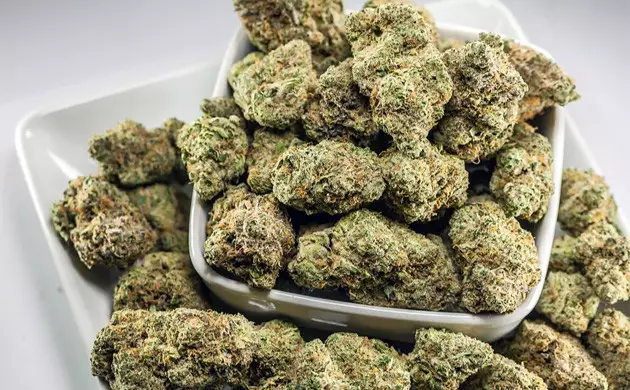
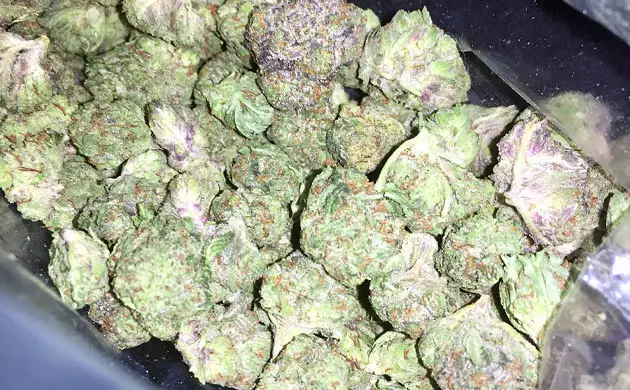

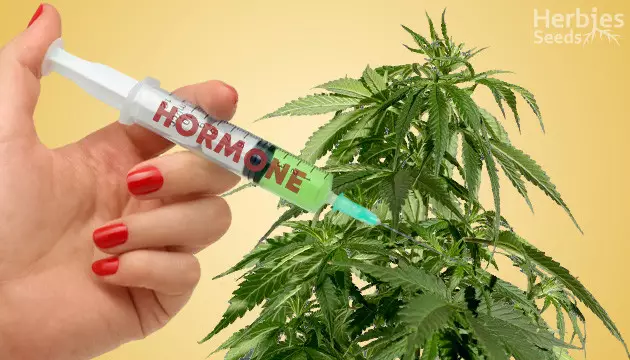


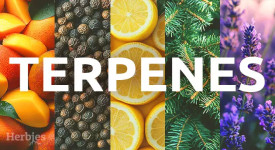
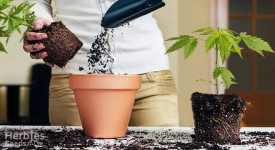


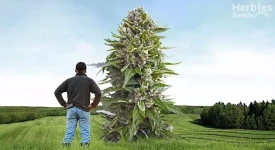
Thank you for leaving a comment for us!
Your feedback will be posted shortly after our moderator checks it.
Please note that we don’t publish reviews that: